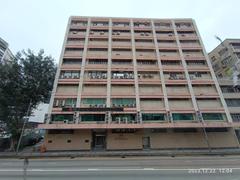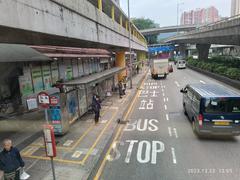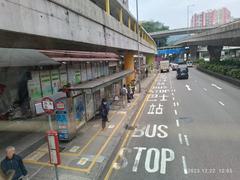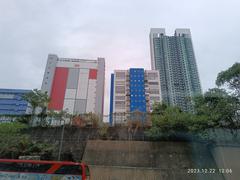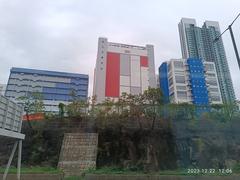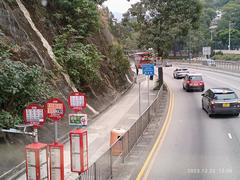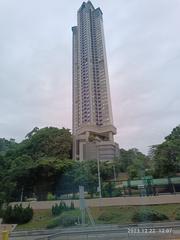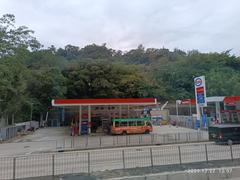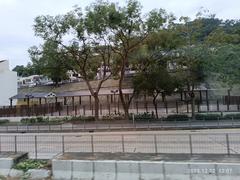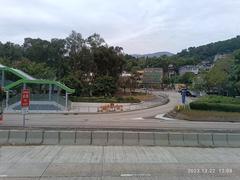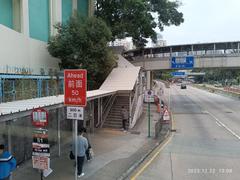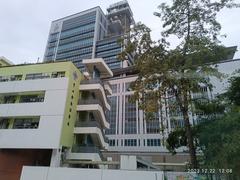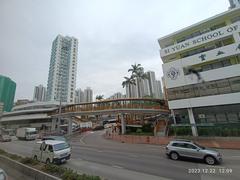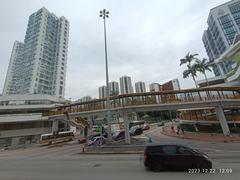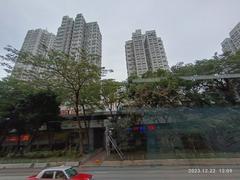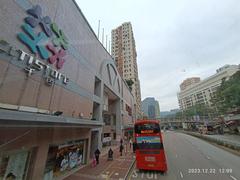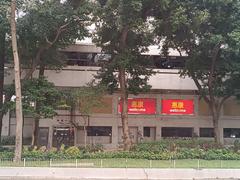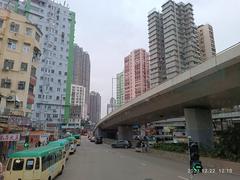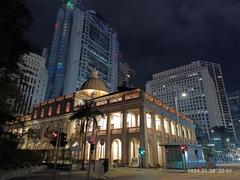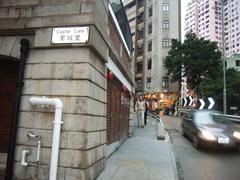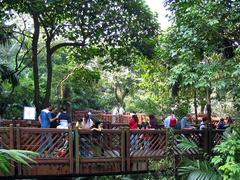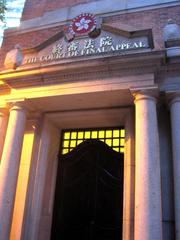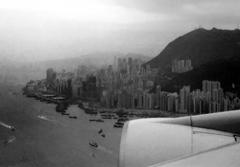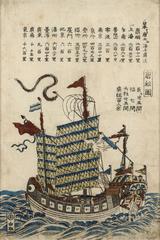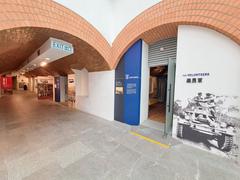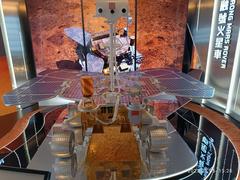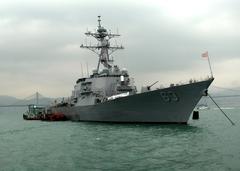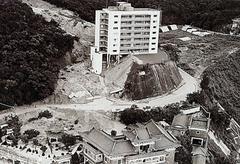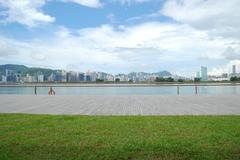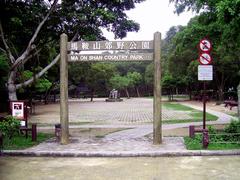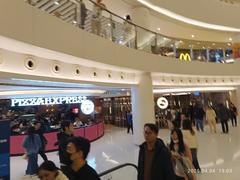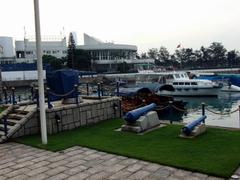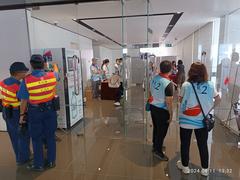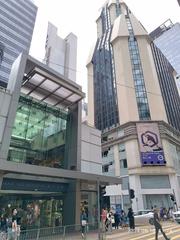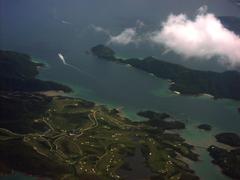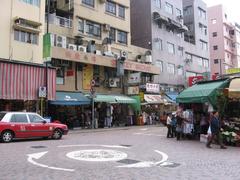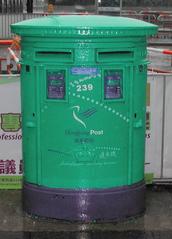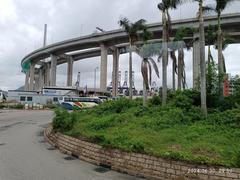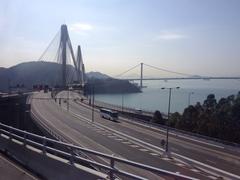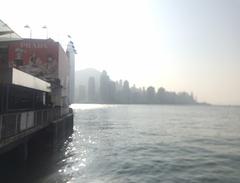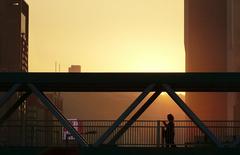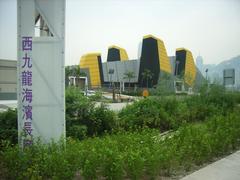
Guide to Visiting Kwai Tsing District, Hong Kong
Date: 17/08/2024
Introduction
Welcome to Kwai Tsing District, a captivating blend of historical richness, industrial evolution, and vibrant contemporary culture situated in the southwest New Territories of Hong Kong. This guide is designed to provide an in-depth exploration of the district’s historical roots, essential visitor information, and cultural highlights, ensuring you gain the most from your visit. Kwai Tsing District, which includes Kwai Chung and Tsing Yi Island, has undergone a remarkable transformation from a modest rural area to a bustling industrial and residential hub. This metamorphosis is largely attributed to mid-20th-century government-led initiatives aimed at accommodating Hong Kong’s burgeoning population and economy. A key milestone in this transformation was the construction of the Kwai Chung Container Terminal in the 1970s, which has since become one of the world’s busiest container ports, handling over 18 million TEUs annually (Rediscover HK).
The district’s significance was further bolstered by major infrastructure projects like the Tsing Ma Bridge, completed in 1997. This bridge, one of the world’s longest suspension bridges, along with the Ting Kau Bridge and Route 8, established Kwai Tsing as a crucial transportation nexus (Kwai Tsing District Office). Beyond its industrial and infrastructural prominence, Kwai Tsing has also developed a rich cultural and recreational landscape. The district is home to parks like Central Kwai Chung Park and Tsing Yi Park, as well as cultural landmarks such as the Kwai Tsing Theatre and Tsuen Wan Town Hall (Mapcarta).
This guide aims to provide you with all the necessary information, from transportation and accommodation to dining, shopping, and outdoor activities. Whether you’re a first-time visitor or a seasoned traveler, Kwai Tsing District offers a unique and enriching experience.
Table of Contents
- Introduction
- Historical Background of Kwai Tsing District, Hong Kong
- Visitor Information
- Conclusion
- FAQ
Historical Background of Kwai Tsing District, Hong Kong
Early Development and Rural Beginnings
Kwai Tsing District, encompassing Kwai Chung and Tsing Yi Island, was historically a rural area marked by small fishing villages and agricultural communities. The district’s name reflects its dual composition, combining “Kwai Chung” and “Tsing Yi.”
Industrial Transformation
The transformation began in the mid-20th century with several government-initiated development projects to accommodate Hong Kong’s growing population and economy. The construction of the Kwai Chung Container Terminal in the 1970s was pivotal, making it one of the world’s busiest container ports, handling over 18 million TEUs annually (Rediscover HK).
Infrastructure Development
Major infrastructure projects like the Tsing Ma Bridge, completed in 1997, further accelerated the district’s growth. This bridge, one of the world’s longest suspension bridges, along with the Ting Kau Bridge and Route 8, solidified Kwai Tsing’s role as a vital transportation hub (Kwai Tsing District Office).
Urbanization and Housing
Industrial growth spurred a demand for housing, and today, Kwai Tsing includes a mix of public and private estates. With 25 public housing estates, 15 Home Ownership Scheme estates, and various private housing estates, the district accommodates approximately 516,600 residents (Rediscover HK). About 60% of the residents live in public housing, highlighting the district’s role in providing affordable living options.
Cultural and Recreational Development
Despite its industrial roots, Kwai Tsing offers a blend of commercial, cultural, and recreational facilities. Parks like Central Kwai Chung Park and Tsing Yi Park provide green spaces, while cultural landmarks such as the Kwai Tsing Theatre and Tsuen Wan Town Hall host various events (Mapcarta).
Modern-Day Significance
Kwai Tsing remains crucial to Hong Kong’s economy and infrastructure. The container terminals are key to the city’s freight transport sector, and the extensive transportation network connects the district to vital areas like the Airport, Northwest New Territories, and West Kowloon (Kwai Tsing District Office).
Community and Governance
The Kwai Tsing District Office (K&TDO) plays a significant role in district administration and community involvement. Collaborating with the District Council, the office addresses residents’ needs and enhances their quality of life. Events like the Kwai Tsing District Sports Festival and the Kwai Tsing E-sports Promotion and Competition Tour foster community spirit and youth development (Kwai Tsing District Office).
Educational and Medical Facilities
Kwai Tsing is well-equipped with educational and medical facilities, including approximately 120 kindergartens, primary, and secondary schools. Medical services are comprehensive, with facilities like Princess Margaret Hospital and Kwai Chung Hospital, along with various outpatient clinics and health centers (Rediscover HK).
Indigenous and Non-Indigenous Villages
The district preserves its historical roots with seven indigenous and two non-indigenous villages on Tsing Yi Island, under the Tsing Yi Rural Committee’s jurisdiction. This committee helps maintain the cultural heritage and traditional practices of the area (Kwai Tsing District Office).
Visitor Information
Tickets and Visiting Hours
Most parks and cultural sites in Kwai Tsing are open to the public with no entry fee. However, it’s advisable to check specific venues for any ticket prices or special visiting hours.
Travel Tips
- Accessibility: Kwai Tsing is well-connected by public transport, including buses and the MTR. The Tsing Yi Station is a major hub.
- Nearby Attractions: Explore adjacent districts like Tsuen Wan for more cultural and shopping experiences.
- Special Events: Look out for local festivals and events, which provide a glimpse into the district’s vibrant community life.
Photographic Spots
- Tsing Ma Bridge: Offers stunning views, especially at sunset.
- Central Kwai Chung Park: Ideal for capturing serene landscapes and local flora.
Conclusion
Kwai Tsing District’s evolution from a rural area to a bustling industrial and residential hub exemplifies Hong Kong’s dynamic growth. With its rich history, strategic significance, and vibrant community life, Kwai Tsing continues to be a vital part of Hong Kong’s urban landscape.
FAQ
Q: What are the best times to visit Kwai Tsing District?
A: The district is vibrant year-round, but visiting during local festivals can be particularly enjoyable.
Q: Are there guided tours available?
A: Yes, several local tour operators offer guided tours focusing on different aspects of Kwai Tsing, from historical sites to modern infrastructure.
Q: How accessible is Kwai Tsing for people with disabilities?
A: Many public areas and transportation options in Kwai Tsing are equipped with facilities to accommodate visitors with disabilities.
Stay Up to Date
For more information and updates on Kwai Tsing District, download our mobile app Audiala, check out other related posts, or follow us on social media.
Visuals and Media
Ultimate Guide to Visiting Kwai Tsing District, Hong Kong - Attractions, Tips, and More
Introduction
Welcome to the ultimate guide for visiting Kwai Tsing District, Hong Kong! This vibrant and diverse district offers a mix of modern attractions, cultural landmarks, and scenic outdoor activities. Whether you’re a first-time visitor or a seasoned traveler, this guide will provide you with all the information you need, from transportation and accommodation to dining, shopping, and more.
Transportation and Accessibility
Kwai Tsing District is well-connected by various modes of transportation, making it easy for visitors to navigate. The district is served by the MTR (Mass Transit Railway) with stations such as Kwai Fong, Kwai Hing, and Tsing Yi on the Tsuen Wan Line and Tung Chung Line. These stations provide quick access to other parts of Hong Kong, including the bustling areas of Central and Tsim Sha Tsui. For those arriving by air, Tsing Yi is conveniently connected to the Hong Kong International Airport via the Airport Express, which takes approximately 14 minutes. Additionally, the district is accessible by numerous bus routes and minibuses, offering an alternative to the MTR. Visitors can also take advantage of the extensive taxi services available throughout the district.
Accommodation Options
Kwai Tsing offers a range of accommodation options to suit different budgets and preferences. For luxury seekers, the Rambler Oasis Hotel and Panda Hotel provide upscale amenities and comfortable stays. Budget travelers can find affordable lodging at various guesthouses and budget hotels scattered across the district.
Key Attractions
Tsing Ma Bridge
One of the most iconic landmarks in Kwai Tsing is the Tsing Ma Bridge, which is the world’s longest span suspension bridge carrying both road and rail traffic. Visitors can enjoy stunning views of the bridge from the Lantau Link Viewpoint, which offers panoramic vistas of the surrounding area. Visiting hours are typically from 6 AM to 11 PM, and there is no entrance fee.
Tsing Yi Park
Tsing Yi Park is a serene green space that provides a peaceful retreat from the urban hustle. The park features beautifully landscaped gardens, a large lake, and walking trails. It is an ideal spot for picnics, leisurely strolls, and bird-watching. The park is open daily from 6 AM to 11 PM, and entry is free.
Kwai Tsing Theatre
For a dose of local culture, visitors should not miss the Kwai Tsing Theatre. This cultural landmark hosts a variety of performances, including traditional Chinese opera, contemporary dance, and theatrical productions. Check the theatre’s schedule for upcoming events and performances. Ticket prices vary depending on the show.
Dining and Cuisine
Kwai Tsing District offers a diverse culinary scene that caters to all tastes. From traditional Cantonese cuisine to international flavors, there is something for everyone.
Local Delicacies
For an authentic taste of Hong Kong, visitors should try local eateries that serve dim sum, roast meats, and seafood. Popular spots include the Kwai Fong Plaza, where visitors can find a variety of local restaurants and food stalls.
International Cuisine
The district also boasts a range of international dining options. From Japanese sushi bars to Italian pizzerias, visitors can enjoy a global culinary journey without leaving Kwai Tsing. The Maritime Square shopping mall in Tsing Yi is home to numerous international restaurants and cafes.
Shopping
Kwai Tsing is a shopper’s paradise with several shopping centers and markets offering a wide range of products.
Maritime Square
Located in Tsing Yi, Maritime Square is a popular shopping destination featuring a mix of local and international brands. The mall also has a variety of dining options and entertainment facilities, making it a great place to spend a day.
Kwai Chung Plaza
For a more local shopping experience, visitors can head to Kwai Chung Plaza. This bustling shopping center offers a wide range of products, from fashion and accessories to electronics and household items. Bargain hunters will enjoy exploring the numerous small shops and stalls.
Outdoor Activities
Kwai Tsing District offers several outdoor activities for nature enthusiasts and adventure seekers.
Hiking
The district is home to several hiking trails that offer stunning views of the surrounding landscape. The Tsing Yi Nature Trail is a popular choice, providing a scenic route through lush greenery and offering panoramic views of the Rambler Channel and Tsing Ma Bridge.
Water Activities
For those who enjoy water activities, the Rambler Channel offers opportunities for kayaking and paddleboarding. Visitors can rent equipment from local vendors and explore the calm waters while taking in the beautiful scenery.
Cultural Insights
Traditional Festivals
Visitors can experience traditional Chinese festivals such as the Mid-Autumn Festival and Chinese New Year, which are celebrated with great enthusiasm in Kwai Tsing. During these festivals, the district comes alive with colorful decorations, lion dances, and festive markets.
Local Art Scene
The district is also home to a growing art scene, with several artists and creative businesses setting up studios in the area. Visitors can explore local art galleries and studios, such as Here Workshop, where they can participate in workshops and learn about traditional wood and metalwork.
Practical Tips
Currency and Payments
The official currency in Hong Kong is the Hong Kong Dollar (HKD). Most establishments in Kwai Tsing accept credit cards, but it is advisable to carry some cash for small purchases and at local markets.
Language
Cantonese is the primary language spoken in Kwai Tsing, but English is widely understood, especially in tourist areas and major establishments. Learning a few basic Cantonese phrases can enhance the travel experience and help in interacting with locals.
Safety
Kwai Tsing is generally a safe district for tourists. However, it is always advisable to take standard precautions, such as keeping an eye on personal belongings and avoiding poorly lit areas at night.
Weather
Hong Kong has a subtropical climate with hot and humid summers and mild winters. The best time to visit Kwai Tsing is during the autumn months (October to December) when the weather is pleasant and ideal for outdoor activities.
Frequently Asked Questions (FAQ)
Q: What are the visiting hours for Tsing Ma Bridge?
A: The best viewpoints for Tsing Ma Bridge are accessible from 6 AM to 11 PM daily.
Q: How to get to Kwai Tsing District?
A: Kwai Tsing District is accessible via MTR (Mass Transit Railway), buses, minibuses, and taxis. The Airport Express connects Tsing Yi to Hong Kong International Airport in approximately 14 minutes.
Q: Are there guided tours available in Kwai Tsing?
A: Yes, several local operators offer guided tours of the district, focusing on its key attractions, cultural heritage, and local cuisine.
Conclusion
Kwai Tsing District epitomizes Hong Kong’s dynamic growth, showcasing a seamless blend of historical significance, industrial prowess, and vibrant community life. From its early days as a rural area to its current status as a bustling industrial and residential hub, the district has continually evolved to meet the needs of its residents and visitors alike. The district’s strategic importance is underscored by its extensive transportation network, which connects vital areas such as the Airport, Northwest New Territories, and West Kowloon (Kwai Tsing District Office).
Visitors to Kwai Tsing can enjoy a rich tapestry of experiences, from exploring historical sites and modern infrastructure to engaging in cultural and recreational activities. The district is well-equipped with educational and medical facilities, ensuring a high quality of life for its residents (Rediscover HK). Despite its industrial roots, Kwai Tsing offers numerous green spaces and cultural landmarks that provide a peaceful retreat from urban life. This comprehensive guide has aimed to provide all the essential information you need to make the most of your visit to Kwai Tsing District. Whether you’re interested in its historical background, local cuisine, or outdoor activities, this district has something for everyone. Don’t forget to check out our other related posts and download our mobile app Audiala for more travel tips and updates. By following these tips and exploring the various facets of Kwai Tsing, you can enjoy a memorable and enriching experience.
References
- Rediscover HK (2023). Kwai Tsing District. Retrieved from Rediscover HK
- Kwai Tsing District Office (2023). District Map. Retrieved from Kwai Tsing District Office
- Mapcarta (2023). Kwai Tsing District. Retrieved from Mapcarta
